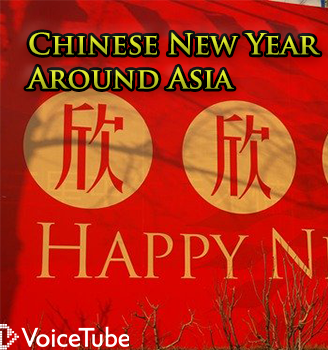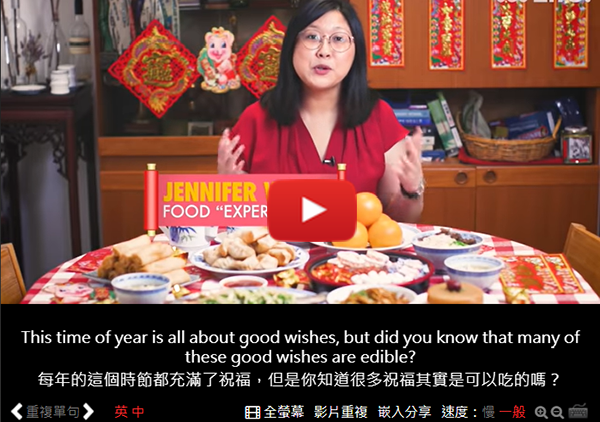Lunar New Year is here!
Asia is about to celebrate
Learn how different countries celebrate?
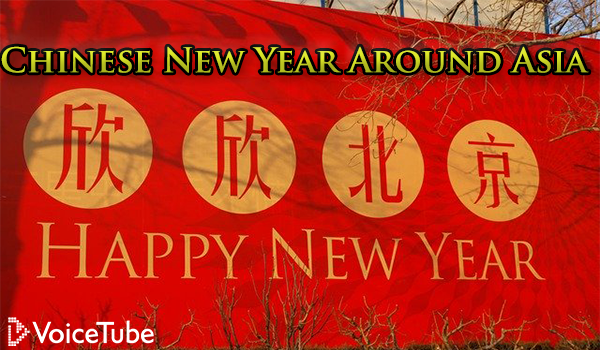
Chinese New Year
Chinese New Year—also known as the Lunar New Year—is a celebration of the new year based on the phases of the moon and the traditional Chinese calendar. From the name, you might think only China honors this important holiday; but in fact, many other Asian countries celebrate it as well. They may call it something different, though, and some of the customs(1) might be a little different depending on the country. Today’s blog is all about how different countries in Asia celebrate the Lunar New Year.
China & Taiwan
Chinese New Year is the most important holiday in Chinese culture, and it runs for about one week! To prepare, people will clean out their homes—this symbolizes getting rid of bad luck from the past. Since this is a family holiday, it’s important to have a clean home for visiting family members. Still, many people in China and Taiwan will also use this time to travel to different countries.
It’s customary to give red envelopes (紅包) filled with money to close family members and other relatives. The amount inside should be an even number since odd numbers are associated with funerals.
There are many traditional foods eaten during this holiday. Dumplings and spring rolls are consumed to bring good luck. Eating fish is said to bring prosperity(2). A couple of other common dishes include sweet rice balls, which signify family and togetherness; and longevity noodles, which signify happiness and—unsurprisingly—a long life.
Last but not least, it’s a fun time to light some fireworks. The loud noise from the explosions is said to scare off the “Nian” monster (年獸), and it makes for some explosive fun.
Korea
The Korean holiday (Seollal, 설날) is a three-day holiday. Families typically(3) visit their hometowns, but many people also like to travel abroad.
Korean families prepare traditional foods, perform ritual ceremonies for their ancestors, bow to their elders, and play traditional games. The most famous traditional food is called Jeon (전), which is a pancake made with meat, vegetables, and fish. Koreans have their own traditional clothing called hanbok (한복), which they typically wear starting on the morning of Seollal.
Finally, Koreans enjoy games like Yutnori, jegichagi, and Go-Stop when they have time to relax on Seollal. Some of the games involve cards, a shuttlecock, and tossing sticks.
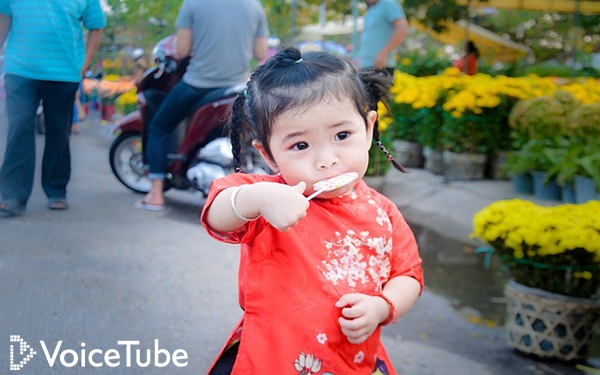
Japan
Japan is interesting because they don’t technically celebrate Lunar New Year, having adopted the Western calendar during the Meiji period in 1873. While there are many traditional Chinese foods available in Japan, one Japanese food to try is wagashi, a sweet pastry made in the shape of one of the zodiac(4) animals.
While Japan may not celebrate lunar New Year like their neighbors, they do have “Little New Year” (Koshōgatsu) on January 15. Temples celebrate divination rituals and families will eat azukigayu (小豆粥), a rice porridge with adzuki beans.
Malaysia
Almost 25% of Malaysia’s population has Chinese heritage(5), so it should be no surprise that Chinese New Year is an important holiday there.
The most unique celebration in Malaysia takes place on the 15th day of the Chinese New Year. Oranges are sold in abundance(6), and people try to throw them into the ocean? Why? Traditionally, women would throw oranges into the ocean, and if this orange was fished out, it meant that she would marry a good husband. Nowadays everyone can participate, and there are many boats that will try to fish out as many oranges as possible.
Thailand
Thailand has a big ethnic Chinese presence, with up to 40% of its population having some Chinese ancestry. Many traditional Chinese customs are celebrated in Thailand, but the most exciting events happen at the end of the holiday.
There is an evening parade filled with bright lights, dragons, floats, and elaborate costumes. The following morning, there is a huge performance to please the gods. The festivities include markets, performances, and a parade of dancers and entertainers.
Vietnam
Lunar New Year in Vietnam is called Tết. Vietnamese families usually return to see their families and clean off their ancestor’s graves. Much like the Chinese, they also clean their houses to sweep away any lingering bad luck. Interestingly, the first day of Tết is reserved for family, the second day for friends, and the third day is reserved for teachers—teachers are held in high regard in most Asian cultures.
People generally decorate with blossoms. Depending on the region, people will decorate their homes with different kinds of blossoms, some of which include peach blossoms and mickey-mouse blossoms. Some of their traditional foods include roasted watermelon seeds, sticky rice with meat, and coconut candies, etc. Lastly, fireworks have become a staple of their Lunar New Year’s celebration as well as other games and competitions. If you travel to Vietnam during Tết then you will see a lot of dragon dances, people parting in the streets, and tons of firecrackers.
Conclusion
Many other countries celebrate Chinese New Year aside from the ones mentioned here. Even in the West, Chinese communities partake in the festivities. Chinatowns exist in virtually every Western country. Whether you are celebrating Chinese New Year or not, we wish you a Happy Lunar New Year. Welcome to the Year of the Rat!
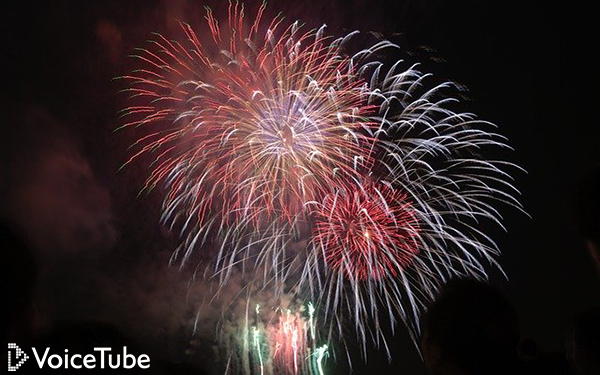
Vocabulary
1. custom (n.)
Def. an accepted way of behaving or of doing things in a society or a community
Ex. It’s a custom in Korea to bow to people who are older than you.
2. prosperity (n.)
Def. the state of being successful, especially in terms of making money
Ex. Prosperity and wealth are important in traditional Chinese culture.
3. typically (adv.)
Def. used to say that something usually happens in the way that you are stating
Ex. She doesn’t typically talk to me, but today she needs my help.
4. zodiac (n.)
Def. based on a 12-year cycle, with an animal representing each year. Chinese zodiacs are determined by birth year, so each zodiac gets the spotlight once every 12 years
Ex. Everyone has an animal in the zodiac. Mine is the dragon.
5. heritage (n.)
Def. the history, traditions, and qualities that a country or society has had for many years and that are considered an important part of its character
Ex. Many people living in San Francisco have Asian heritage.
6. abundance (n.)
Def. a large quantity that is more than enough
Ex. Olives grow in abundance in Greece.
Photos
greetings-banner-happy-new-year byPublicDomainPictures
Child-children-baby-laugh-vietnam by loilamtan
fireworks-white-red-light-color by nguyentuanhung
Sources
https://theculturetrip.com/asia/articles/how-southeast-asian-countries-celebrate-chinese-new-year/
https://www.chinahighlights.com/travelguide/chinese-food/chinese-new-year-food.htm
